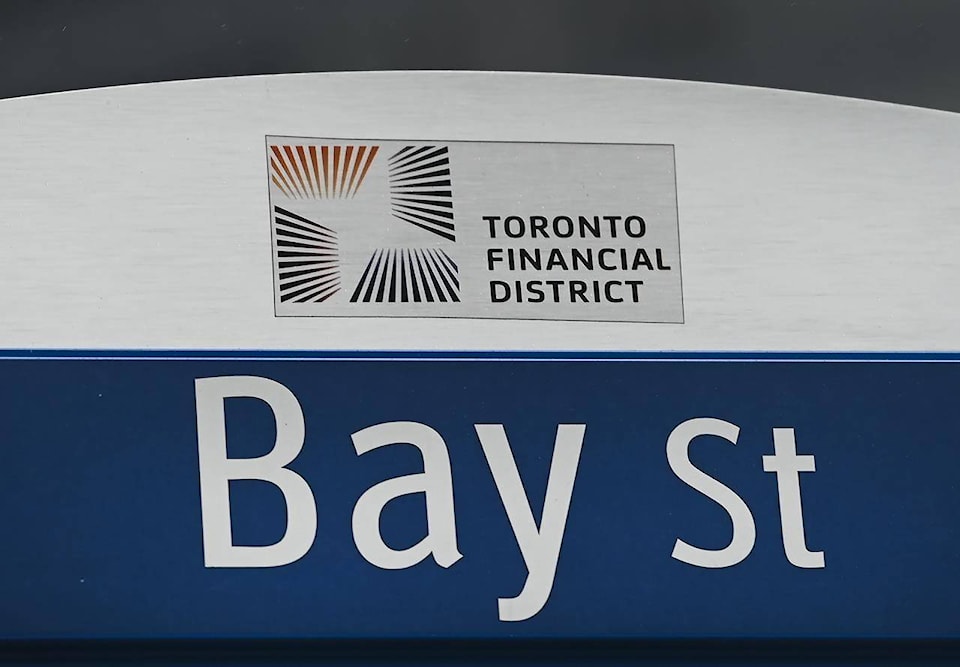TORONTO — Canada’s main stock index dipped from Friday’s record high despite increased oil prices while a defensive move toward technology pushed two U.S. stock markets into record territory on the lingering impact of a dovish Fed outlook.
The S&P/TSX composite index lost 49.67 points to close at 20,594.97.
In New York, the Dow Jones industrial average was also lower, losing 55.96 points at 35,399.84.
However, the S&P 500 index gained 19.42 points to a record close of 4,528.79, while the Nasdaq composite was up 136.39 points at 15,265.89. Both tech-heavy markets set all-time highs in earlier trading.
The TSX lost some ground as energy producers felt some pressure from the potential negative impact of hurricane Ida, which battered the Gulf Coast and prompted crude prices to rise. Materials and financials were also lower.
The October crude oil contract was up 47 cents at US$69.21 per barrel while the October natural gas contract was down 8.3 cents at US$4.31 per mmBTU.
The energy sector was down one per cent with Tourmaline Oil Corp. off two per cent and Suncor Energy Inc. down 1.2 per cent in heavy trading.
“I don’t think it signals any change in the broader narrative for the markets, which has been one of continued strength, particularly for risk assets like equities,” said Craig Fehr, investment strategist at Edward Jones.
He said the positive tone was set last week with Federal Reserve chairman Jerome Powell suggesting the U.S. central bank was in no hurry to reduce stimulus, let alone start to tighten monetary policy.
That propelled the TSX to a record close on Friday and continues to support the S&P 500 and Nasdaq moving into new high territory “given that the economy remains on the mend, and corporate profits are rising quite strongly.”
“I think the challenge to that narrative is the fact that the Delta variant certainly puts a pothole on the road to recovery domestically and for the global economy,” Fehr said in an interview, adding the fundamental backdrop remains quite positive.
Technology was the winner on the day as investors adopted a defensive tone that’s been consistent with recent market movements. The sector increased nearly one per cent as shares of Hut 8 Mining Corp. rose seven per cent and Lightspeed was up 3.3 per cent.
So-called cyclical and value sectors like energy and financials perform well on risk-on days while technology and more defensive sectors outperform on risk-off days like Monday.
“Today we’re seeing a little bit of a breather, but it’s really just a shift underneath the surface to more of those growth and defensive names,” Fehr added.
Materials lost 0.9 per cent with shares of Iamgold Corp. down 4.3 per cent and New Gold Inc. 3.9 per cent lower.
The December gold contract was down US$7.30 at US$1,812.20 an ounce while the December copper contract was up 4.4 cents at US$4.38 a pound.
The Canadian dollar traded for 79.35 cents US compared with 79.15 cents US on Friday.
Despite Monday’s softness, the TSX is heading toward concluding a positive August on Tuesday for a seventh straight month of gains.
Economic data was strong in the month even in the face of renewed COVID-19 restrictions that are likely going to curtail household consumption in the third quarter, said Fehr.
“So I think we’ll see a little bit weaker data in Q3, but still positive economic growth, which is fostering that rise in corporate profits. It really is providing the fuel for equities to move higher.”
This report by The Canadian Press was first published Aug. 30, 2021.
Companies in this story: (TSX:LSPD, TSX:HUT, TSX:IMG, TSX:NGD, TSX:TOU, TSX:SU, TSX:GSPTSE, TSX:CADUSD=X)
Ross Marowits, The Canadian Press
